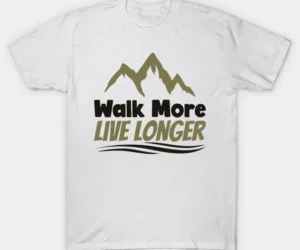Women's Hiking Jackets
Women’s Hiking Jackets: Choosing the Perfect Gear for Outdoor Adventures
Introduction
Hiking is an exhilarating outdoor activity that offers a blend of adventure, exploration, and connection with nature. To fully enjoy your hiking experience, it’s crucial to have the right gear, and one essential item in every hiker’s wardrobe is a reliable hiking jacket. In this article, we’ll explore the world of women’s hiking jackets, from the key features to consider when buying one, to the top brands, fitting tips, care and maintenance, and more. Let’s dive in!
Importance of Choosing the Right Hiking Jacket
When venturing into the great outdoors, the weather can be unpredictable. A well-chosen hiking jacket acts as your shield, protecting you from wind, rain, and cold temperatures. It keeps you comfortable and ensures your safety in various conditions. Investing in a quality hiking jacket is a smart decision that enhances your overall hiking experience.
Key Features to Consider
- Weather Resistance: Look for jackets made from waterproof or water-resistant materials like Gore-Tex or nylon to keep you dry during unexpected showers.
- Breathability: Opt for jackets with breathable fabrics and ventilation options to prevent excessive sweating and maintain comfort.
- Insulation: Depending on the climate, choose jackets with appropriate insulation, such as down or synthetic fill, to provide warmth when needed.
- Weight and Packability: Consider lightweight jackets that can be easily packed and carried during your hikes.
- Durability: Ensure your jacket is made from durable materials that can withstand rough terrain and frequent use.
Types of Women’s Hiking Jackets
a. Hardshell Jackets: Ideal for harsh weather conditions, hardshell jackets provide excellent protection against rain, wind, and snow.
b. Softshell Jackets: These jackets offer greater breathability and flexibility, suitable for mild to moderate weather conditions.
c. Insulated Jackets: Perfect for cold climates, insulated jackets provide optimal warmth, often with a combination of down and synthetic insulation.
d. Fleece Jackets: Fleece jackets are great for layering and offer warmth and comfort in cool weather.
Top Brands for Women’s Hiking Jackets
- The North Face: Known for their high-quality outdoor gear, The North Face offers a wide range of women’s hiking jackets designed for various conditions.
- Patagonia: Patagonia focuses on sustainability while producing durable and reliable hiking jackets that perform well in the outdoors.
- Arc’teryx: Renowned for their innovative designs, Arc’teryx produces premium hiking jackets with exceptional performance and durability.
- Columbia: Columbia offers a range of affordable hiking jackets without compromising on quality and functionality.
Factors to Consider When Buying
- Hood and Collar: Look for jackets with adjustable hoods and high collars to provide added protection against wind and rain.
- Pockets and Storage: Consider jackets with ample pockets and storage options to carry essentials like maps, snacks, or a smartphone.
- Mobility and Range of Motion: Choose jackets that allow for unrestricted movement, especially in the arms and shoulders, for comfortable hiking.
How to Properly Fit a Hiking Jacket
Achieving the right fit for your hiking jacket is crucial for comfort and functionality. Here are some tips for a proper fit:
- Sleeve Length: The jacket’s sleeves should extend beyond your wrists, ensuring coverage even when your arms are raised.
- Shoulder Fit: The shoulders should align with your natural shoulder line, neither too tight nor too loose.
- Hemline: The jacket’s hem should fall below your waist, providing adequate coverage and preventing drafts.
- Layering Space: Ensure there is enough room to comfortably layer clothing beneath the jacket without restricting movement.
Care and Maintenance of Hiking Jackets
To prolong the lifespan of your hiking jacket and maintain its performance, follow these care and maintenance tips:
- Read the Manufacturer’s Instructions: Familiarize yourself with the specific care instructions provided by the manufacturer.
- Regular Cleaning: Clean your jacket as per the instructions using appropriate detergents to remove dirt, stains, and odors.
- DWR Reapplication: If your jacket has a durable water repellent (DWR) coating, consider reapplying it periodically to restore water resistance.
- Zipper Maintenance: Keep zippers clean and lubricated to ensure smooth operation.
- Storage: Store your jacket in a cool, dry place away from direct sunlight to prevent damage and mold growth.
Best Practices for Layering with Hiking Jackets
Layering is crucial for maintaining comfort and adapting to changing weather conditions during hikes. Here are some best practices:
- Base Layer: Start with a moisture-wicking base layer to keep your skin dry and regulate body temperature.
- Insulation Layer: Add an insulating layer like a fleece or down jacket for warmth in cooler conditions.
- Hiking Jacket: Wear your hiking jacket as the outer layer to provide weather protection.
- Adjust Layers: Adjust your layers based on the weather and your activity level to prevent overheating or excessive cold.
How to Choose the Right Size
When selecting the size of your hiking jacket, follow the manufacturer’s size guide and consider the following:
- Measure Yourself: Take accurate measurements of your chest, waist, hips, and arm length to find the right size.
- Consider Layering: Account for the layering space you may need and choose a size that allows comfortable layering.
Comparing Different Price Ranges
Hiking jackets come in a wide range of prices, and while budget considerations are important, remember that quality and performance are equally crucial. Consider the following price ranges:
-
- Budget-Friendly: Columbia, Trespass, and Marmot offer affordable options without compromising on functionality.
- Mid-Range: Brands like The North Face, Patagonia, and Outdoor Research offer reliable jackets in the mid-range price range, providing a balance between performance and cost.
- High-End: Arc’teryx, Mammut, and Black Diamond offer premium hiking jackets with advanced features and exceptional durability.
Customer Reviews and Ratings
Before making a purchase, it’s beneficial to read customer reviews and ratings to gather insights from other hikers. Look for reviews that mention factors like durability, weather resistance, comfort, and overall performance. Online retailers and outdoor gear websites often provide a platform for customers to share their experiences.
Eco-friendly Options
If you prioritize sustainability, consider eco-friendly hiking jackets made from recycled materials or produced using environmentally friendly manufacturing processes. Brands like Patagonia and The North Face have initiatives to reduce their environmental impact and offer eco-conscious options.
Conclusion
A well-chosen hiking jacket is an essential piece of gear for any outdoor enthusiast, especially for women embarking on hiking adventures. By considering key features, exploring different types and brands, ensuring the right fit, and practicing proper care and maintenance, you can find the perfect hiking jacket to enhance your outdoor experiences. Remember, investing in a quality hiking jacket is an investment in your comfort, protection, and enjoyment during your hiking journeys.
FAQs (Frequently Asked Questions)
-
-
- Can I use a regular jacket for hiking?
- While a regular jacket may provide some protection, it’s best to invest in a specialized hiking jacket designed for outdoor conditions. Hiking jackets offer specific features like weather resistance, breathability, and durability, catering to the needs of hikers.
- Are women’s hiking jackets different from men’s hiking jackets?
- Yes, women’s hiking jackets are designed with specific considerations for the female body shape, offering a better fit and functionality. They often have adjustments for waist and hip size, as well as tailored designs for enhanced comfort.
- How do I know if a hiking jacket is waterproof?
- Look for jackets made with waterproof materials like Gore-Tex or nylon, along with a high waterproof rating. Additionally, check if the jacket has sealed seams, waterproof zippers, and a durable water repellent (DWR) coating.
- Can I wear a hiking jacket in everyday life?
- Hiking jackets can be versatile and functional for everyday wear, especially in cooler or rainy climates. They provide weather protection and often have stylish designs that blend well with casual outfits.
- How often should I replace my hiking jacket?
- The lifespan of a hiking jacket depends on usage and care. However, as a general guideline, consider replacing your jacket every 3-5 years or when you notice significant wear, loss of waterproofing, or diminished insulation performance.
- Can I use a regular jacket for hiking?
-
Showing 1–12 of 15 results
-

Mountain Warehouse Bracken Melange 3 in 1 Womens Jacket – Waterproof Ladies Rain Jacket, Thermal Tested Ladies Coat, Breathable, Detachable Hood, Adjustable – For Jet Black 14
£89.99 – £139.99 Select options -

Trespass Alissa II Womens Waterproof 3 in 1 Jacket with Hood
Read more -

Trespass Clea, Dark Khaki, S, Waterproof Jacket with Concealable Hood for Women, Small, Green
Sale! Original price was: £43.99.£36.60Current price is: £36.60. Add to basket -

Helly Hansen Womens Crew Hooded Midlayer Jacket, M, Navy
£95.79 – £121.44 Select options -

Columbia Women’s Inner Limits II Waterproof Jacket
Sale! Original price was: £100.00.£64.80Current price is: £64.80. Add to basket -

helly Hansen Juel Jacket 597 Navy L
£34.06 – £90.00 Select options -

Jack Wolfskin Cold Bay Jacket Women’s Jacket – Dusty Grey, Large
£129.51 Add to basket -

AOTORR Ladies Plain Fleece Hoodie Coats Womens Zip Up Long Sleeve Winter Warm Hooded Jacket, S, Dark Gray
£19.99 Add to basket -

Helly Hansen W Long Belfast Jacket Womens Black 2XL
£98.48 – £216.87 Select options -

LHHMZ Womens Windproof Hiking Jacket Lightweight Breathable Waterproof Outdoor Softshell Casual Coats with Hood
£29.89 – £43.74 Select options -

Helly Hansen Mens Belfast 2 Packable Jacket, L, Navy
£80.08 – £140.00 Select options -

Helly Hansen Womens Sirdal Hooded Insulated Jacket, XS, Black
£108.26 – £159.47 Select options
Showing 1–12 of 15 results










